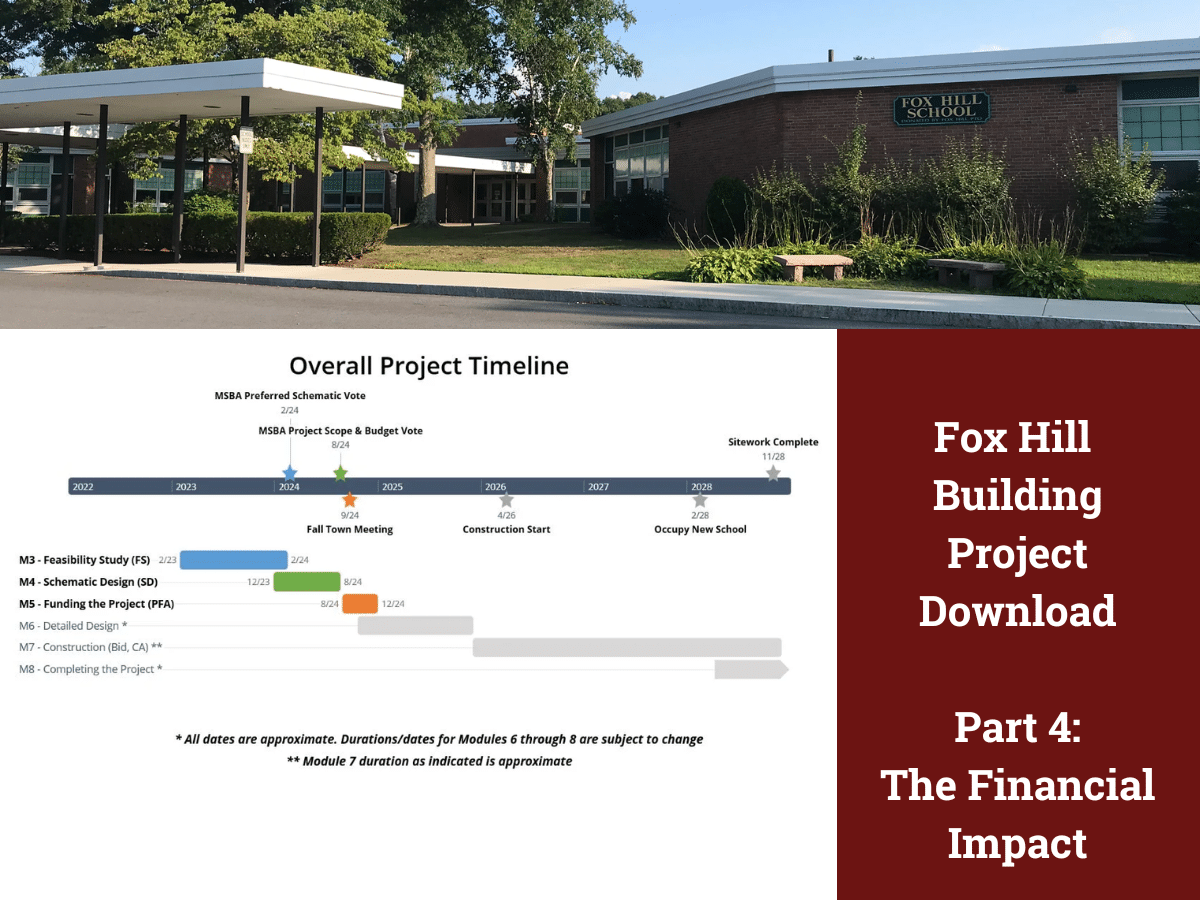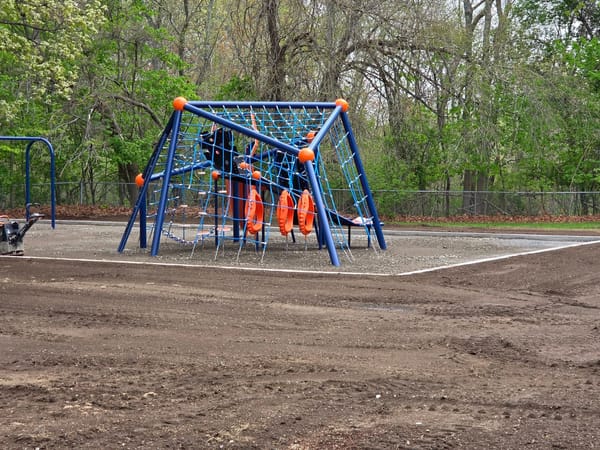Focus on Fox Hill Part 4: The Financial Impact


The Fox Hill school building project has been in the works for several years now, and now that the theoretical building planning is translating to a financial question that will impact taxpayers around the town, it's time to talk about the impact of this large capital project on the town's finances and on taxpayers, and its place in the broader context of building planning in Burlington.
The immediate landscape for Burlington's buildings includes three large projects. The police station, which has been approved by Town Meeting to the tune of $46 million, will likely be constructed from about 2025-2027. The Fox Hill School, if it is approved next week at Town meeting, will be completed in 2028 and cost the town about $64 million after state reimbursements and anticipated energy incentives. And the high school, which is still in the preliminary planning stage, is the next project on the agenda.
By all accounts, the high school project will be larger than the other two combined, but the details of the project are far from final, so it's hard to project costs and timelines. For a building of that size, $250 million is probably a reasonable starting figure, and that number has been used as a hypothetical at public meetings. At the September 18, 2024, Ways & Means Committee meeting, where the Committee voted unanimously to approve the Fox Hill funding article, Christine Monaco, Vice-Chair of the Burlington High School Building Committee, said the district is looking to present that project in the next year or two. Both of these details are subject to change but provide some shape to help understand the broader context.
Fox Hill is estimated to result in an increase of $217 on the average homeowner's annual tax bill. Doug Davison, Ways & Means Committee Chair, expressed confidence in this number, as many members through many processes have arrived at roughly the same amount. This is also probably an upper limit, according to discussion at this meeting, because interest rates will likely be lower than the presumed 5% and the bond can be stretched to 30 years instead of 25; both of these conditions would lower the annual taxpayer cost.
The amount would be phased in gradually, but eventually taxpayers will be paying for the police station, Fox Hill, and the high school all at the same time. Committee member, Ed Parsons, noted that some existing bonds will be paid off along the way, which will offset the impact to the taxpayer.
The same can be said about the police station, which is set to have a $100-150 annual tax impact, and the high school, which will likely be several hundred dollars a year when all is settled.
The town has the ability to fund the police station and Fox Hill projects from the operating budget without any approval from voters. However, assuming Fox Hill funding is approved by Town Meeting, the town does expect to go to the voters in April with a debt exclusion for each one. A debt exclusion, for lack of a better term, excludes the debt from the 2.5% tax levy increase limit that is mandated by the state; that means the debt for the police station and Fox Hill wouldn't figure into the calculation that tells the town how much it can raise its taxes to continue providing the same level of services. This would not affect how much the project costs the town or the taxpayer, but it would give the town more of a cushion for future financial health.
The need for a debt exclusion is more salient with the high school, as factoring the project into the state's calculation would have the town bumping up against their ability to raise taxes, thus having to make some hard decisions about services to cut because the town can't raise taxes enough to pay for them. However, performing the work on the high school in phases can spread out that debt so it doesn't hit the tax bill all at once.
"The need is there and inescapable," said Davison, noting that Fox Hill will only be more expensive to rebuild later, and at that point it's likely the town would have to do it without state reimbursement. Or, as DiNisco Design's Donna DiNisco, lead architect on this project put it during the Ways & Means Committee meeting, the town could spend the same amount of money over the next few years just upgrading the current school, but would still be left with one that doesn't meet the educational needs of the students inside it.
Many community members have expressed concern that the town will not have an appetite for a third large capital project (which translates to a tax increase) and debt exclusion so soon after the first two, and they'd rather postpone Fox Hill until after the high school is done. Tomorrow we'll dig more into that and talk about what could happen if Fox Hill funding isn't approved. Learn more about the project at the Fox Hill Building Project website via the videos embedded under the top image. Learn more about the history of school buildings in Burlington in our In-Depth report.





